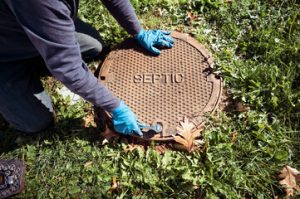
Pests can cause costly damage to homes, businesses, and storage spaces. Preventive pest control saves money, protects health and safety, and keeps properties pest-free year-round.
Treatment frequency depends on the type of pest and their life cycles. For example, cockroaches reproduce quickly and require frequent treatments to keep them under control. Visit https://www.benspest.biz/ for more details.
Monthly
Pests don’t take a break from attacking homes and businesses, so it is important to maintain a preventive program that includes regular inspections and treatments. A trained pest control expert can spot the early warning signs that can help prevent a problem from escalating, saving you money, time, and peace of mind.
Many people ask how often they should schedule professional pest control, and the answer depends on several factors. Generally, it is recommended that you get service every three months to ensure that pests are kept at bay throughout the year. However, if your property is more prone to infestations or you have an unusual pest issue, more frequent services may be necessary.
Some pests become more active at certain times of the year, and understanding these patterns can help you schedule your services at optimal times. Rodents, for example, are more likely to invade homes and buildings in the fall as they seek shelter for the winter. Scheduled pest control services can eliminate rodent nests and protect your home from a potential infestation.
Spring is also an important time to schedule pest control, as ants and termites start their annual swarming and mating cycle. If left unchecked, these pests can cause extensive damage to structures, and scheduling regular treatment in the spring can prevent them from establishing full colonies.
Summer is another season when it is important to schedule routine pest control. During this time, mosquitoes are at their most active, which can be a health risk to your family and pets. Regular spraying of targeted areas can stop the spread of mosquitoes and other pests that thrive in warm climates. Cockroaches and ants are also more active in the summer, and treating these pests at their peak can help keep them away from your property.
In the fall, scheduled pest control can reduce your chances of a rodent infestation as rats and mice begin their annual search for warm places to spend the winter. Rodents often invade houses through small cracks and crevices, and scheduled pest control treatments can help to eliminate any existing colonies. In addition, a fall treatment can protect your property from cockroaches and other pests that thrive in cold temperatures.
Quarterly
Whether in a home, office, or storage unit, pests are dangerous and can cause significant damage to property. Preventive treatment reduces risk, saves money, and maintains a healthy environment. Whether pests are ants, cockroaches, mosquitoes, or rodents, regular treatments minimize their populations and prevent future infestations.
Seasonal changes can impact pest activity, requiring more frequent inspections and treatments. For example, pests are more active during warm weather due to fluctuating temperatures and humidity. Additionally, different pests have various reproductive cycles. Because of these factors, it is important to understand how the seasons affect pest control and the best time to schedule a service.
A professional pest control technician will determine how often your property needs treatment based on its history and the types of pests in the area. Properties with a history of infestations and structures in need of repair require more frequent treatment, potentially on a quarterly or monthly basis during peak seasons. A pest control company will work with you to establish a plan that is customized for your property, lifestyle, and budget.
For instance, a home with wood damage and cracks may need more frequent inspections than one without these issues. A pest control company will also look at other contributing factors, such as the location of your property, and how much vegetation or standing water is nearby. In tropical and humid areas, pests have a higher rate of reproduction and can more easily infest properties.
In the spring, ants, roaches, and termites are more active as they seek food and shelter after a long winter. Scheduling treatment early in the year can stop these pests before they become established, preventing costly repairs and health risks. Fall is another busy time for pest control because it’s when rodents and stink bugs seek shelter for the winter.
Performing more frequent pest inspections can help protect a home from future problems and increase its value. Licensed pest control experts carefully examine both the inside and outside of homes to find small cracks, entry points, and hidden areas where pests may live or hide. Inspectors also check for signs of pests, such as droppings or gnaw marks, in attics, crawl spaces, and the foundation.
In addition to protecting your property from pests, pest control can keep your family and pets safe and improve the overall quality of life. Contact a trusted pest control company to schedule your pest inspection and preventative treatment today!
Semi-annual
Pests can cause significant damage to homes, businesses, and storage units. They also pose health risks for humans and pets. Regular pest control services prevent infestations and protect property value. However, determining the ideal frequency of treatment can be challenging. It depends on the type of pest, its life cycle, and environmental factors. For example, properties with a history of severe pest problems may require more frequent treatments. In general, pest control professionals recommend a quarterly inspection and treatment schedule.
A proactive approach to pest control is the best way to avoid costly repairs and maintain a pest-free property. In addition to protecting property value, regular treatments reduce health risks and improve safety for families and employees. Pests like rodents, ants, and mosquitoes can spread diseases that pose a threat to human health. These pests can also trigger allergic reactions in people and pets. Regular pest control services keep these unwanted creatures away, reducing the risk of health issues.
In addition to preventing pests, routine pest control services prevent them from causing extensive damage to buildings. This can save homeowners and business owners thousands of dollars in repair costs and restore their property’s value. Pests can contaminate food and beverages, damage the structure of buildings, and lead to fire hazards. Pests can also destroy valuable items and create unpleasant odors. Regular pest control services ensure that these unwanted creatures are removed before they can cause damage to your property or contaminate your food supply.
The need for pest control varies depending on location, climate, and building structure. For instance, tropical and humid areas are more likely to attract pests, and homes or businesses in these regions need to be treated more frequently than those in temperate climates. Certain types of pests, such as termites and cockroaches, require annual or bi-annual visits to prevent infestations.
Regardless of the type of pest, property owner’s should consult with a professional to determine the optimal pest control schedule. The pest control expert will examine the property and identify potential sources of infestation, including cracks, crevices, and other entry points. They will also inspect for signs of pest activity, such as chew marks and droppings.
A pest control expert can design a tailored plan to meet the needs of the property, ensuring protection year-round. In addition to minimizing the risk of infestations, a professional can provide property owners with tips on how to make the property less attractive to pests. By creating an unfavorable environment for pests, property owners can protect their investment and enjoy peace of mind. In addition, pest control services can prevent a wide range of problems, from fire hazards to odors and damage to the structural integrity of the building.

